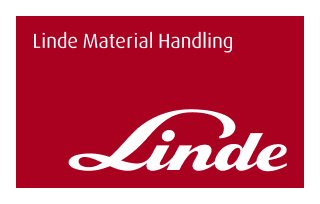- Blog
- General


Australian Standard AS 2359 provides guidelines for the design, construction and performance of powered industrial trucks, including forklifts, to ensure their safety.
These Standards, adopted by industry leaders like Linde Material Handling, cover operation and driver safety features as well as warning systems which should keep your machines, operators and workplaces safe.
The key design components covered in the Standards include stability and structural integrity measures, which prevent tipping.
Machines should display their rated load capacity clearly, along with any specific instructions related to load handling – another measure to prevent accidents. Forklifts must also have effective braking systems that allow for safe stopping in various conditions, including emergency situations.
There is a strong focus, both in the Standard and among fleet managers, on operator safety. As previously mentioned, Australia exceeds international standards for forklift seatbelts. “All Linde counterbalance machines have seatbelts fitted and interlocks on those seatbelts to prevent operation without the seatbelt being fitted properly,” says Allan Spackman, Technical Manager - Warehousing Solutions at Linde Material Handling Australia.
In addition, all Linde electric counterbalances have speed limiting applied when the mast is elevated. This means operators can’t drive dangerously with their loads raised. “Machines can also be speed-limited according to site requirements,” Spackman adds.
While the Standard covers driver protection in operator compartments, Spackman notes that Linde’s designs also focus on ergonomics “to reduce the likelihood of fatigue or strain-related incidents”. Spackman goes on to say, “All machines are designed to produce extremely low noise, vibration and harshness (NVH) levels — again, mitigating strain and fatigue.”

Under the Standard, forklifts should be equipped with warning devices, such as reverse alarms and flashing lights, to alert pedestrians and other workers in the vicinity.
Linde has taken this requirement a step further under its “Vision Zero” philosophy which aims to increase safety and reduce forklift accidents and other incidents when handling goods.
In addition to any Standard features, all Linde equipment can be supplied with a range of warning and lighting safety solutions. These options start with Linde LED Stripes, a simple but powerful solution which consists of LED lights at the front and rear of the forklift which indicate the direction of travel.

Another option is Linde's Warning Lines System, which helps to protect pedestrians from potential hazards by projecting clearly visible bright lines onto the floor of the workspace.
Linde’s most advanced safety add-on, Linde Safety Guard, is an innovative monitoring system that increases safety for truck operators and pedestrians in the vicinity of the truck. The Linde Safety Guard system warns of imminent danger via acoustic signals, flashing LED lights or vibrations.
With such a vast array of safety systems built into the machines and available as optional extras, it is important to understand the working environment when selecting your final forklift configurations. Spackman advises, “Every single system is designed with operator and pedestrian safety as the primary focus. They all minimise risks, and help create a safer working environment. But to maximise your safety, efficiency and productivity, you should carefully consider which are best suited to your particular site and operations.”
Keep up to date with the latest in material handling safety and innovation by visiting our Content Hub and subscribing to our quarterly newsletter. And for the latest news and updates on all things Linde, follow us on LinkedIn.
VISIT CONTENT HUB